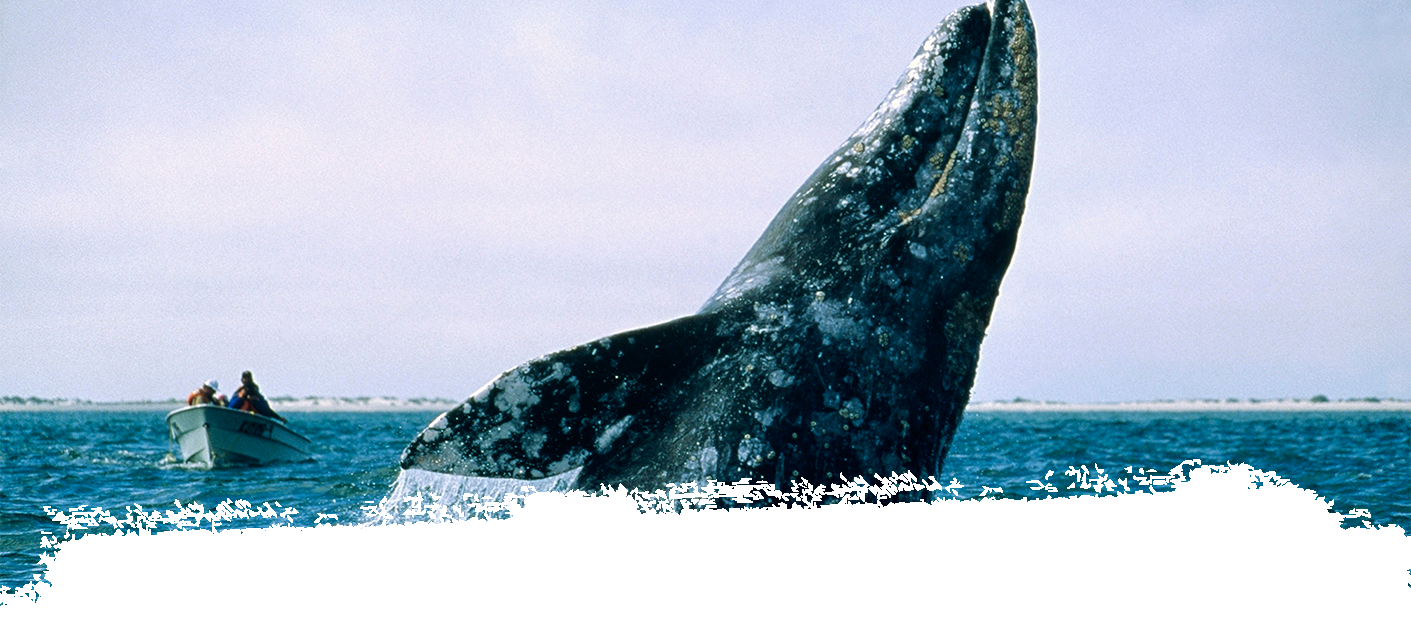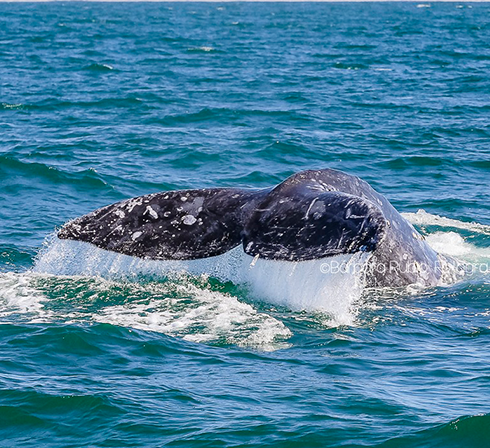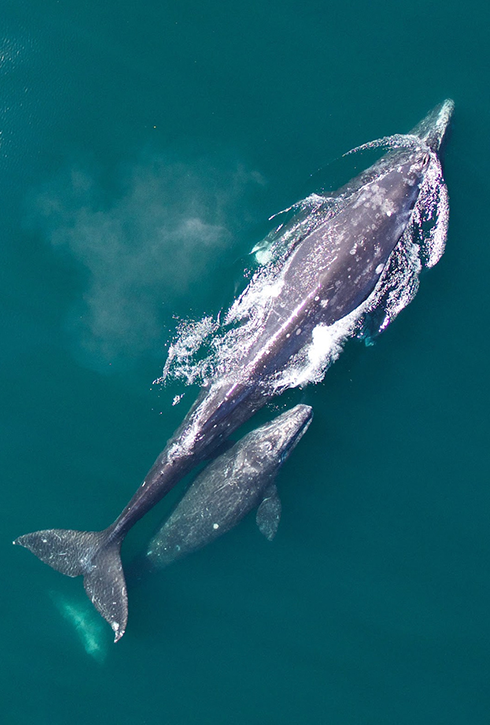
Whales belong to marine mammals, also known as cetaceans. The gray whale belongs to this group; its scientific name is eschrichtius robustus. The gray whale has a very original life cycle, half of the year it keeps traveling, and the other half, the gray whale spends three months feeding itself in the waters of the Arctic Ocean and the Bering Sea, and the other three months of the year is dedícate to their breeding activities within the lagoons and bays of the peninsula of Baja California.
The gray whale is an animal that measures 12 to 16 meters long and weighs between 20 to 35 tons. They belong to a group of whales with no teeth (baleen whales), they have instead keratin plates that hold the upper jaw. Keratin is a protein similar to the keratin in our nails and hair. These plates are known as "whales" and branch into flexible and ivory "combs" or "whiskers" measuring 50 inches long.


Unlike other whales, gray whales feed on from the bottom of the ocean, their main food is small crustaceans (shrimp-like animals but smaller) and other small invertebrates. During the summer, when in the cold waters of the Arctic and Bering Sea, they feed on sandy bottoms, where they leave huge footprints or "bites" at the bottom of the sea, spending up to 18 hours a day in this activity.
Migrating gray whales are considered the longest of any mammal. They travel about 16,000 miles over 6 months from the Arctic to Baja California in organized groups to breed and take refuge from the cold of the north. During their migration, whales can swim without stopping for periods of 20 hours at a speed of 4 knots (about 7 miles per hour), but if they are bothered they reach 10 knots or faster.
During migration following the contours of the coast to 50 feet deep, you can see groups that are closer to the coastline. Thanks to their extraordinarily developed sense of hearing, whales can know how far they are from the bottom of the sea and, thus, avoid running around in shallow waters. They have developed a system that works well as sonar which helps them to be oriented in their navigation; they emit sounds that are spread by water and sound waves, so the whales are able to listen to these sounds to navigate and find their way around.
The gray whale, like all mammals, breathe with lungs and nostrils, or nares, which are at the top of the head, slightly behind the eye level. They usually have three breaths at intervals of 15 seconds, then plunge under the water and last between three and seven minutes.
The gray whale is dark gray at birth, and as it grows they develop a light gray color for the large number of organisms that are stuck to their skin. These organisms are called barnacles, they stick to their skin and when detaching them, they leave whitish scars which look like gray as the gray whales we now see.
Their body is covered by a thick layer of fat that allows them to maintain body temperature between 36 and 37 degrees Celsius (similar to humans) even in very cold waters. Their kidneys are about three feet long and weigh 70 kilograms; gray whales have a very efficient system for filtering water, discard the salt in the urine and incorporate water into the blood.
Pregnant female whales who come to the lagoons, seek loopholes and shallow places of 3.5 to 15 meters, looking for quiet and good temperate waters. They mate only every two years as the gestation period lasts thirteen months. It is believed that, like in other cetaceans, one or two female whales assist the delivery of the baby whale on its birth, they are born by their tail and once expelled from the womb of the mother, is helped to bring the head to the surface to breathe.
The baby whale spends with his mother 11 months for lactation, she feeds the baby whale through a pair of breasts located in the ventral region. The milk is pumped into the mouth of the baby whale. Milk is rich in fat (53%) and at only three months, the baby whale is grown and strong enough to start their first migration to the Arctic seas. The baby whales consume 190 liters of milk per day, and stop taking breast milk from 7 to 12 months.
*Material provided by the Education Coordinating Group Pro Esteros of Ensenada, Baja California.
Phone (646) 178 - 6050.


